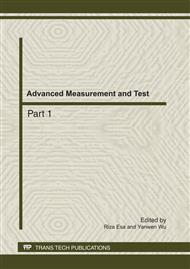p.682
p.688
p.691
p.695
p.701
p.707
p.713
p.719
p.724
A Cost Function-Oriented Quantitative Evaluation Method for Unmanned Ground Vehicles
Abstract:
Task driven approach is widely used as an evaluation method for intelligent vehicle, however this approach may lead to many teams using the conservative approach to complete the task. Although the competition task can be completed, it has deviated from the goal of technological development actually. A cost function-oriented quantitative evaluation method is proposed in this study. The time to complete each task and the quality of each indicator are considered in the evaluation method. The cost function-oriented quantitative evaluation method guides the intelligent vehicle’s development in the "low-cost index" (i.e. high technology) direction. The evaluation results in the 2010 Future Challenge: Intelligent Vehicles and Beyond (FC’ 2010) competition showed that the proposed method can quantitatively evaluate the overall technical performance and individual technical performance of unmanned vehicles.
Info:
Periodical:
Pages:
701-706
Citation:
Online since:
July 2011
Authors:
Price:
Сopyright:
© 2011 Trans Tech Publications Ltd. All Rights Reserved
Share:
Citation:


